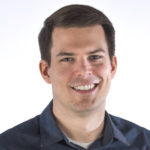BATTLE GROUND — Planting hundreds of plants in a single morning might sound like a daunting task, but the work goes quickly when 40 people pitch in.
Volunteers at a Brookhaven Park restoration event in Battle Ground got off to a quick start on Saturday morning, digging through the mud and dirt to plant dozens of native trees, shrubs and other plants in just the first hour.
The restoration project is led by the Lower Columbia Estuary Partnership, and funded by a grant from the Lower Columbia Fish Recovery Board’s Clark County Clean Water Restoration Fund.
“We just started this project this year,” said Partnership environmental educator McKenzie Miller. “Today’s the first day of planting. We’re hoping to plant about 2,000 plants here.”
It will take four or five planting events to reach that total, Miller said. The project area is about 1.5 acres, and will create a 100-foot riparian buffer around Woodin Creek, which runs through Brookhaven Park in Battle Ground.
The creek is one of five main tributaries of Salmon Creek, and was approved as a planting project site after the Estuary Partnership secured the grant from the Fishery Board, Miller said. The park area near the river had become overrun with invasive species, choking out many of the native plants and leading to poor water quality.
The first step in the cleanup was to hire contractors to go through the area and spray to kill off the two most prevalent invasive species: Himalayan blackberry bushes and reed canary grass near the creek. Volunteers then walked through the cleared places and planted hundreds of small colored flags indicating good spots for planting specific native species.
“We wanted to restore it to natural conditions,” said Battle Ground associate storm water engineer Kelly Uhacz. “The Columbia Estuary Partnership determined which plants (would work best).”
Then it was all hands on deck Saturday morning as a crew of approximately 40 people worked their way through the park planting native species at each flag site. There were 15 native species available, Miller said, including Indian plum shrubs, cedar trees and willow trees.
Most of the volunteers on Saturday were Cub Scouts from Pack 608, along with their parents and a mix of other middle school, high school and Clark College volunteers. Future events will rotate through about a dozen sixth grade classes that have signed up, Miller said.
The rainy mid-February weather made for some muddy working conditions, but the volunteers came prepared with boots and rain gear. The planting events are usually held regardless of the weather, Miller said, although the recent snow did cause some delays.
“This is the planting season — you plant when the plants are dormant,” Miller said. “As long as people come dressed for the weather, they’re pretty happy.”
Many of the Cub Scouts worked on a section near the park’s walking trail. Roman Cousineau, 7, and his sister Pilar, 6, worked together with their dad Carl to plant a series of Indian plum and snowberry saplings.
The Cub Scouts learned that the native plants will provide a better habitat for animals and offer more shade to keep the creek cool during the summer. They’ll also help with stormwater runoff, providing better filtration as the water works its way down to the creek.
“We’re digging holes for new plants to help this creek, because in the summertime it’s getting too much yucky stuff in it,” Roman explained.
Some of the other participants were frequent volunteers. Down in the muddier river area, Camas High School students Thomas Hull, 16, and Odessa Thompson, 17, worked on planting some of the riparian species. Hull said he’d attended his first planting event in 5th grade at Steigerwald Lake Wildlife Refuge, and had kept going to them as a way to get outside and see more of the community.
“This is our first time planting cedar,” he said. “We’ve planted a lot of willow and a lot of riparian species. It just feels really satisfying when you’re done, to see all the plants you’ve planted.”
Thompson said she’d begun going to planting events at the start of the current school year, and they’d attended events all around Clark County as well as Portland.
“It’s nice to know we’re making a small difference,” she said.
The Estuary Partnership will continue to monitor the site and maintain the plants through August 2021, Miller said, and next year the restoration work will turn to a new portion of the Woodin Creek watershed at Hidden Glen Park.





